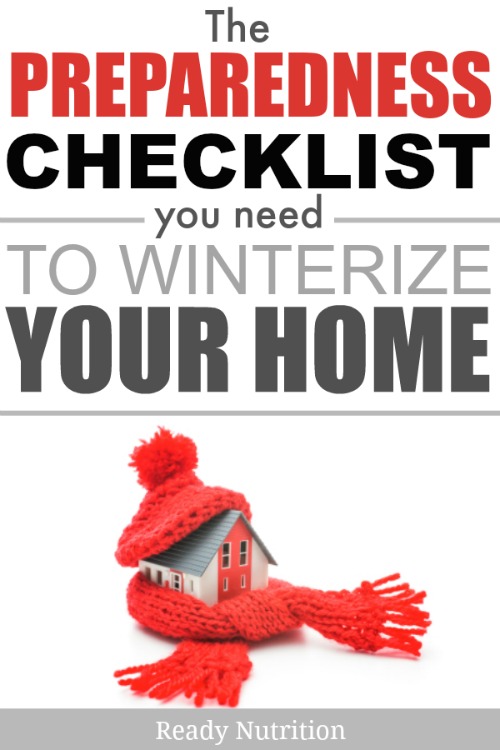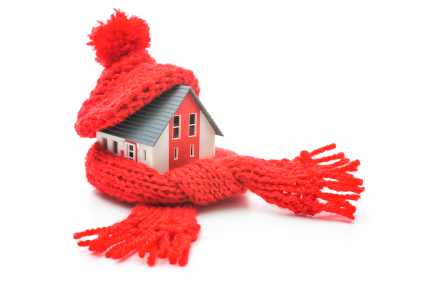Winter disaster scenarios are not something you want to take lightly. In a worst-case scenario, you could be off the grid for days on end with only the food and water present in your home. You could be snowed in or your car blocked by fallen debris. The point is, even though we are usually given ample warning of winter storms, there are unpredictable circumstances and you should be prepared to face them.
There are ways to fortify your home for winter to help you have a better chance at thriving in these circumstances.
Checklist for Winterizing the Home
Outdoor Preparations:
Extend the life of your fuel supply by insulating walls and attics, caulking and weather-stripping doors and windows, and installing storm windows or covering windows with plastic.
Outdoor structures, such as the barn, shed or any other structure that may provide shelter for your family, neighbors, livestock or equipment may also need winterizing. Clear rain gutters; repair roof leaks and cut away tree branches that could fall on a house or other structure during a storm.
Clean and inspect chimneys and other heating equipment every year.
Insulate pipes with insulation or newspapers and plastic and allow faucets to drip a little during cold weather to avoid freezing. Running water, even at a trickle, helps prevent pipes from freezing.
Prevent carbon-monoxide medical emergencies and keep all fuel-burning equipment should be vented to the outside and kept clear.
Check and keep fire extinguishers on hand, and make sure everyone in your house knows how to use them. House fires pose an additional risk, as more people turn to alternate heating sources without taking the necessary safety precautions.
Learn how to shut off water valves (in case of a pipe bursting).
Hire a contractor to check the structural ability of the roof to sustain unusually heavy weight from the accumulation of snow – or water, if drains on flat roofs do not work.
Rock salt or more environmentally safe products to melt ice on walkways.
Sand to improve traction.
Snow shovels and other snow removal equipment.
Sufficient heating fuel. You may become isolated in your home and regular fuel sources may be cut off. Store a good supply of dry, seasoned wood for your fireplace or wood-burning stove.
Minimize travel. If travel is necessary, keep a disaster supplies kit in your vehicle and have winter-related items included.
Indoor Preparations:
Make a family-based emergency plan.
Have a short-term emergency supply and ensure that you have an ample supply of water and shelf stable foods.
Adequate clothing and blankets to keep you warm in an off grid environment.
Make a Family Communications Plan. Your family may not be together when disaster strikes, so it is important to know how you will contact one another, how you will get back together and what you will do in case of an emergency.
Have an alternative power source such as a generator, a battery-powered radio on hand to listen to changing weather conditions, flashlights and extra batteries.
Know how to stay warm in an off grid situation.
Bring pets/companion animals inside during winter weather. Move other animals or livestock to sheltered areas with non-frozen drinking water.

This article was originally published at Ready Nutrition™ on January 4th, 2014








Make sure your chain saw is in good condition, fueled and ready to go in the event of tree downing from wind, snow load or ice load. Hopefully the ones that could fall on your roof were removed during fairer weather.
A contractor is not the best person to check your roof’s structural integrity. He comes with a conflict of interest. A structural engineer familiar with your home’s style of construction (a civil engineer won’t readily know the ins and out of wood frame building techniques) or a home inspector are better choices.